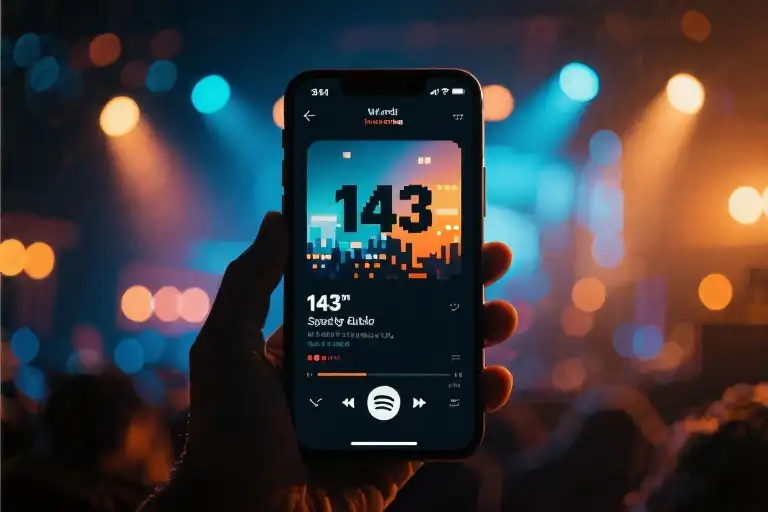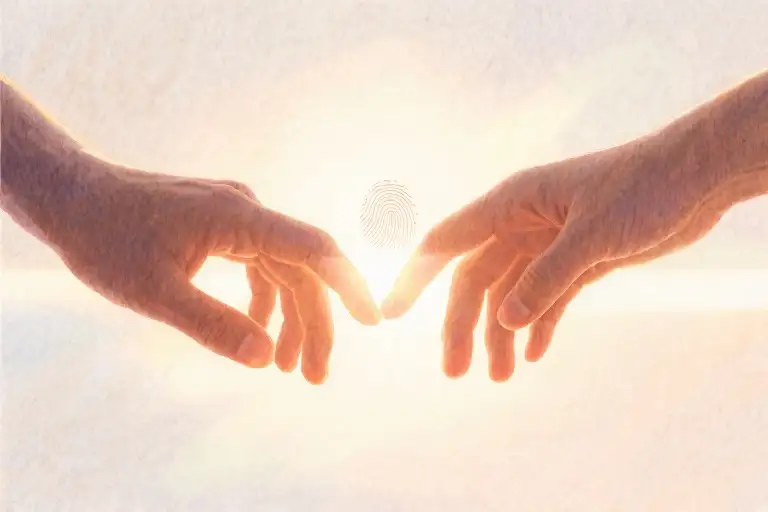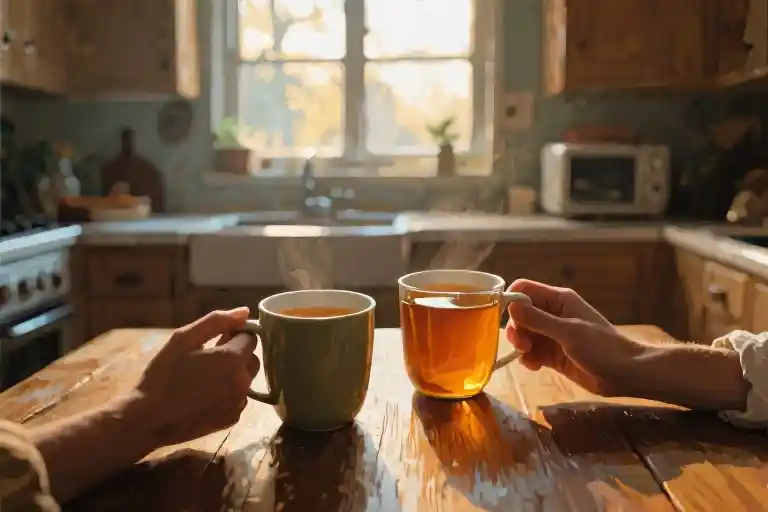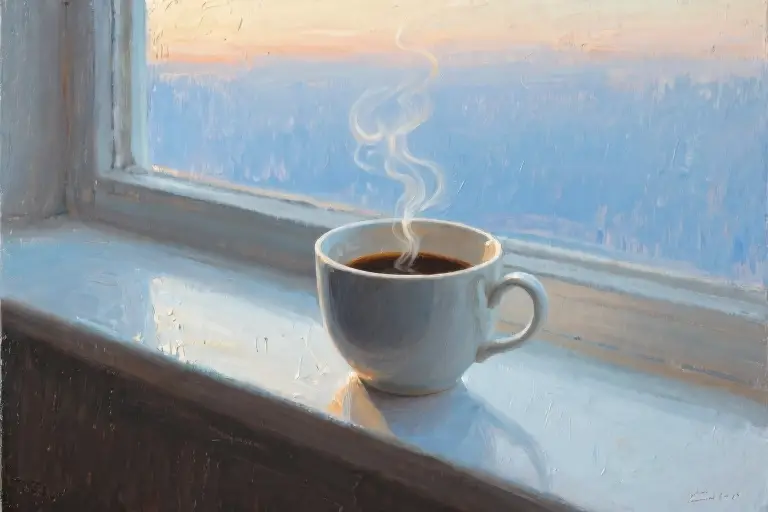The glow of my phone screen cuts through the darkness, illuminating the first song link you ever sent me, still buried in our chat history like a fossilized heartbeat. “Just a random recommendation,” you’d said. Casual. Unassuming. The kind of throwaway gesture people make when sharing a funny meme or a coffee order. But 143 songs later, I’ve come to understand that some shares aren’t shares at all—they’re bottled messages tossed into the digital sea, each one carrying weight we never acknowledge aloud.
Music recommendations between friends usually follow predictable patterns: the nostalgic throwback, the current obsession, the ironic bad-but-good bop. Yours arrived without context, no “This reminded me of you” or “Listen to the bridge at 2:15.” Just a naked Spotify link appearing between discussions about work and weekend plans. I pressed play expecting nothing more than three minutes of entertainment. What I got was a skeleton key.
That first song—I won’t name it, because names have power—became a Rosetta Stone for understanding your silences. The lyrics mapped perfectly to conversations we’d never had, to jokes that died before reaching our lips, to questions I stored in the back of my throat like hard candies. When the track ended, I found myself staring at the album art as if it might reveal hidden coordinates. All it showed was your profile picture in the “sent by” tag, smiling in that half-awkward way you do when someone points a camera at you unexpectedly.
Then came the playlist. Not another isolated track, but a curated sequence with my name in the title. A mixtape for the algorithmic age. You called it “collaborative” before I could process what that meant—an invitation to step across the invisible line between passive listener and active participant. The moment I accepted, something shifted in the digital air between us. Suddenly we weren’t just sharing music; we were building a dialect no one else would understand, note by note, pause by pause.
Late nights became our unwitting accomplices. I’d lie awake watching the tracklist grow, each new addition a breadcrumb leading deeper into the forest of what-if. The songs you chose carried fingerprints I learned to recognize: that specific cover of a classic no one remembers, the B-side track from a band’s debut album, the acoustic version only available on some obscure live recording. These weren’t random selections. They were chosen with the precision of someone arranging flowers—stem length, bloom size, color gradient—all calculated to convey what words couldn’t.
And I responded in kind. My additions came carefully spaced, never two in a row, always calibrated to seem casually thoughtful rather than desperately meaningful. A love song disguised as a road trip anthem. A breakup ballad that could pass for political commentary if you squinted. The space between tracks became our confessional booth, the skip button our safety valve.
We never discussed the growing playlist, not really. Occasionally you’d text “check track 27” or I’d reply “listen to what I just added” with no further explanation. The music did our talking for us, lyrics standing in for sentences we’d choke on if attempted face-to-face. Over weeks, then months, the playlist accumulated songs like a tree gathers rings—each layer preserving the climate of a particular moment in our undefined relationship.
Now, at 143 tracks, it’s become something between a time capsule and a haunted house. I still visit, running my cursor down the list like fingers along a gravestone. Some songs trigger visceral memories: the rainstorm during track 12, the power outage that interrupted track 45’s guitar solo, the way you hummed track 78 under your breath when we finally met up that one time. Others feel like messages in cipher, their meanings erased when you stopped hitting play.
That first song still sits at the top like a headstone. I hover over it sometimes, remembering how innocent it all seemed before the playlist became our shared language—before we mistook musical intimacy for the real thing. The dates tell the true story: your last addition was 11 months ago. Mine was yesterday. The math isn’t complicated.
Yet still I press play, night after night, because 143 songs later, I’ve learned this terrible, beautiful truth: music may fade, but the silence between notes lasts forever.
The First Song: When a Playlist Becomes a Secret Garden
It began with a link sent casually through the screen, the kind of recommendation you might make to anyone—a song you heard on the radio, a track that got stuck in your head. “You might like this,” you said, and I clicked play without thinking much of it. But somewhere between the first chorus and the final note, something shifted. This wasn’t just a song anymore; it was a window into how you experienced the world, the rhythms that moved you, the lyrics that made you pause.
Then came the second recommendation, and the third. Each one felt like a small gift, wrapped in the unspoken understanding that music is never just sound—it’s a fingerprint. I started saving them all in a private playlist I named after the date you sent the first one, as if cataloging these moments could keep them alive.
When you suggested making a shared playlist instead, it caught me off guard. Collaborative playlists are different. They require permission, a deliberate opening of doors. Clicking “Accept” felt like stepping onto a bridge between our separate worlds, one where we could meet in the middle without having to explain why certain songs mattered.
Late at night, I’d listen with headphones on, the melodies threading through the dark like whispered secrets. The playlist became our midnight language—no need for excessive words when the right song could say it better. You’d add a track with a wistful guitar riff; I’d respond with something piano-driven and hopeful. Back and forth, measure by measure, we built something that felt like ours alone.
There was an unspoken ritual to it:
- The way I’d check for new additions first thing in the morning
- The pause before adding a song, weighing whether the lyrics revealed too much
- The particular thrill when I’d press play and recognize your musical handwriting in the selection
Music became our safest form of vulnerability. I could never tell you how your messages made my pulse skip, but I could add a song about hands trembling when they touch. You might not have known the effect your late-night shares had, but the playlist did—it documented every unsaid thing in major and minor keys.
What started as a casual exchange grew into something more intricate, like vines quietly weaving a lattice between two trees. The songs were no longer just recommendations; they were placeholders for conversations we weren’t ready to have out loud. And with every addition, the playlist became less about the music and more about the silent space between us where all the important things lived—the things we let the artists say for us because their words came with built-in deniability.
I didn’t realize it then, but we weren’t just sharing songs anymore. We were planting a garden in the quiet, one where emotions could bloom without the risk of being stepped on. The playlist was our greenhouse—protected, intentional, alive with possibilities that might never survive the harsh light of day. And for a while, that was enough.
143: Our Secret Morse Code
The first time I noticed the number—143 songs in our shared playlist—my breath caught. It wasn’t just a random count. Those three digits carried the weight of a language we’d built without ever naming it.
Long before smartphones, when pagers ruled communication, people used numeric codes to send covert messages. ‘143’ meant ‘I love you’—one letter per digit count. Simple. Efficient. Safe. A perfect solution for emotions too fragile to spell out in full. You probably added songs without thinking about the tally, but when I saw that number glowing on my screen at 2am, it felt like you’d slipped a note into my locker between classes.
We’d been speaking in lyrics for months by then. That Death Cab for Cutie track you added—I Will Follow You into the Dark—wasn’t just a melancholy melody. It was your way of saying what we both knew couldn’t be voiced aloud: that you’d choose companionship even in uncertainty. When I responded with First Day of My Life by Bright Eyes, the chorus—This is the first day of my life / I’m glad I didn’t die before I met you—became my shaky confession. Neither of us commented on the choices. The playlist was our neutral territory, where vulnerability wore the disguise of music recommendations.
Psychologists call this ‘symbolic communication’—using shared cultural artifacts (songs, movies, inside jokes) to express what direct language struggles to convey. A 2021 study in the Journal of Social and Personal Relationships found that 68% of participants used music to signal romantic interest when they feared verbal rejection. We weren’t being coy; we were following an ancient human impulse to wrap tender feelings in protective layers.
Some selections were inside jokes—that terrible pop song we heard at the gas station that time it rained. Others functioned as emotional shorthand. The Smiths’ There Is a Light That Never Goes Out did the work of a thousand ‘what if’ conversations: And if a double-decker bus / Crashes into us / To die by your side / Is such a heavenly way to die. Dark humor masking real longing. We stacked these musical bricks higher, building a fortress where our feelings could exist without the risk of exposure.
Then came the day the counter tipped to 144. I’d added a new track—Someone You’d Admire by Fleet Foxes—after a week of your silence. The lyrics whispered what I couldn’t: I walk with others in the yearning. When you didn’t respond or add another song, the number stopped being our code and became a monument. 143 frozen in time, like a watch stopped at the moment of impact.
Now when I scroll through, I see the patterns we never acknowledged. The cluster of hopeful songs from when we first met. The stretch of melancholic ballads that coincided with your growing distance. The final track—your last addition—was The Book of Love by Peter Gabriel. I’ve read the lyrics like tea leaves a hundred times: The book of love is long and boring / No one can lift the damn thing. Was it resignation? A farewell? Our entire relationship exists in these ambiguities.
Music theorists talk about ‘the notes you don’t play’ being as important as the ones you do. The spaces between our songs held entire conversations. That’s the cruel beauty of speaking through playlists—the meaning lives in what’s left unsung.
If you ever reopen that list, you’ll find I’ve kept adding to it. Not every week like before, but whenever a song captures something I wish you knew. The count is at 167 now. The code is broken, but the habit remains—my quiet rebellion against silence. Sometimes I imagine you noticing the new additions, your finger hovering over the play button, wondering if any of them are messages in bottles tossed your way.
Mostly I hope you remember how to read between the lines. Because buried in those 143 songs is everything we never said out loud.
The Silent Chorus: When Music Replaced Conversation
The playlist kept growing even as our messages grew sparse. There was an inverse relationship between the frequency of song additions and the length of our conversations – each new track seemed to occupy space where words might have gone. I’d notice you adding three songs in a week, yet your replies took days. The math never added up, but neither did my courage to ask why.
Those unspoken questions joined the growing collection in my mind’s draft folder, right alongside the unsent messages and songs I considered adding but never did. The ‘Add to playlist’ button began to feel like a ‘Send’ button for emotions I couldn’t name. Sometimes I’d select a track, hover over the plus sign, then exit without saving – the musical equivalent of typing out a text only to delete it. The songs we didn’t share became its own kind of conversation.
Music became our primary language when words failed us. Where normal friends might say “I miss you” or “How was your day?”, we communicated through chord progressions and carefully curated lyrics. A melancholic indie song about distance said more than any awkward attempt at vulnerability. An upbeat track with hopeful lyrics served as a peace offering after tense silence. We developed this lexicon without discussion, each addition carrying disproportionate weight.
I began measuring time in playlist updates rather than calendar dates. Your flurry of additions during that rainy April meant more than any birthday greeting. The two-week gap in May when neither of us touched the playlist felt louder than any argument. By June, the songs arrived like postcards from someone who’d already left town – beautiful artifacts of a connection that was slipping into past tense.
The strange alchemy of our digital collaboration meant the playlist took on qualities we never discussed. It became:
- Our shared diary in a language only we understood
- The safest place to say dangerous things
- A time capsule of who we were when pressing ‘Add’ felt like enough
Yet for all its intimacy, the playlist also became evidence of what we avoided. Every meaningful lyric about love or longing that went unacknowledged. Every inside joke disguised as a song title that never got called out. The growing collection of musical breadcrumbs that neither of us followed to their logical conclusion.
Now when I listen, I hear both the songs and the silence between them. The space where real conversations might have lived. The questions I wish I’d asked when the playlist was still active and not just an archive. Most of all, I hear how we used music as both bridge and barrier – connecting through shared melodies while hiding behind them.
There’s a particular kind of loneliness in having so much to say to someone through every medium except your actual voice. The playlist became proof we knew how to speak to each other, just not how to talk about what mattered. Maybe that’s why I still add to it sometimes – not expecting you to notice, but because after all this time, it remains the most honest place I know to put what I feel.
Pressing Play: Diving for Echoes of Ourselves
The glow of my phone screen at 2:37 AM feels like the last campfire in a deserted world. My thumb hovers over the playlist cover – that same blurred concert photo you chose three summers ago. These days, listening has become equal parts ritual and recklessness. Part of me still hopes to see the magical “Collaborator Activity” notification, that little asterisk proving you’ve been here too. The larger part knows better.
Music has this cruel duality when it comes to nostalgia. The right song can simultaneously make you feel closer to someone and highlight the irreversible distance between you. I’ll catch myself analyzing your last added track from eleven months ago – that indie folk song about train stations and goodbyes. Was it foreshadowing or just another melody you fancied? The playlist offers no footnotes.
What fascinates me most is how these 143 tracks have become aural time capsules. The early songs smell like midnight conversations and emoji-filled texts. The middle section tastes of hesitant vulnerability, when we both started burying messages in lyrics. The final additions carry the metallic tang of things left unsaid. Pressing shuffle becomes archaeological work, each song a stratum of who we were at different moments.
Sometimes I’ll add new tracks like tossing coins into a dried-up wishing well. A moody piano piece that sounds like the rain the night we almost met up. An upbeat pop song with lyrics that scream everything I should’ve said. They sit there unacknowledged, these musical messages in bottles. Yet I keep sending them, because deleting the playlist would feel like erasing a version of myself that only existed in relation to you.
The cruelest trick? How Spotify’s algorithm now recommends “similar to songs in your collaborative playlist.” As if any algorithm could comprehend why I need songs that sound like the silence between us, like the static of a disconnected call. Still, I save them to the playlist anyway, building this monument to what never quite was.
Most days I understand this isn’t healthy. The playlist has become less about you and more about the person I became when creating it – someone brave enough to love quietly, foolish enough to believe in coded meanings. Maybe that’s why I can’t bring myself to delete it. Those 143 songs hold the blueprints of a heart under construction, and even abandoned buildings have their own dignity.
So I keep pressing play. Not to hear you, but to remember how it felt to believe music could bridge the distance between two people. To honor that younger self who thought love might be as simple as sharing the right song at the right moment. The songs still sound beautiful, even if the ending didn’t. And perhaps that’s enough – to have created something beautiful together, however fleeting.
If you ever stumble back into this playlist, you’ll find it’s grown. Not with angry songs or sad songs, just… true ones. Because the strangest lesson this has taught me? Real love letters aren’t about persuasion – they’re about bearing witness. These songs say: you mattered. We mattered. And somewhere in the space between those notes, I’m learning to let go without forgetting.
The timestamp still glows faintly on the screen: ‘Last active 289 days ago.’ A relic of digital archaeology, this playlist now exists in a peculiar limbo—simultaneously alive with 143 heartbeats and frozen in the moment you stopped pressing play. I scroll past our old additions, each song thumbnail a tiny headstone marking where our conversations used to dance.
Sometimes I catch myself hovering over the ‘Add Song’ button, finger trembling like a séance participant begging for contact. The 144th track sits unplayed between us, its three-minute duration containing everything I couldn’t say when words still mattered. Did you notice when the algorithm quietly shuffled it into rotation? Or does it linger unheard, another casualty of the ‘Recently Added’ graveyard?
Music platforms should really invent a feature that notifies you when someone replays your additions years later. A little ghost icon maybe, pulsing gently when old playlists get resurrected. I’d trade all my premium features just to know if you ever let ‘our songs’ shuffle into your commute or bedtime routines. Not that it changes anything—the silence has composted into something richer and sadder than mere absence now.
Curious how digital artifacts outlast their creators. This playlist has become our Pompeii, perfectly preserved beneath layers of algorithmic ash. Every lyric we weaponized, every harmony we hid behind, suspended in streaming amber. Archaeologists of the future could probably reconstruct our entire non-relationship from the BPM variations alone.
I should delete it. Not out of anger, but mercy—like putting down a sick animal. Yet something primal resists. As long as these servers keep humming, as long as Spotify doesn’t purge inactive accounts, we technically still have something in common. The math is simple: 143 shared songs > 0 shared tomorrows.
Maybe that’s why I added one final track after you left. Not another wistful indie ballad or lyric-heavy confession, just forty-seven seconds of vinyl crackle—the sound of a needle lifting at record’s end. My tiny monument to the quietest breakup in history. No dramatic last message, no unfriending, just the gradual dimming of two green ‘online’ dots.
So here’s to our unsent symphony. May it keep floating in the cloud long after we’ve both forgotten the words. And if some algorithm ever nudges it into your recommendations again? Press play. The static at the end is me letting go.





